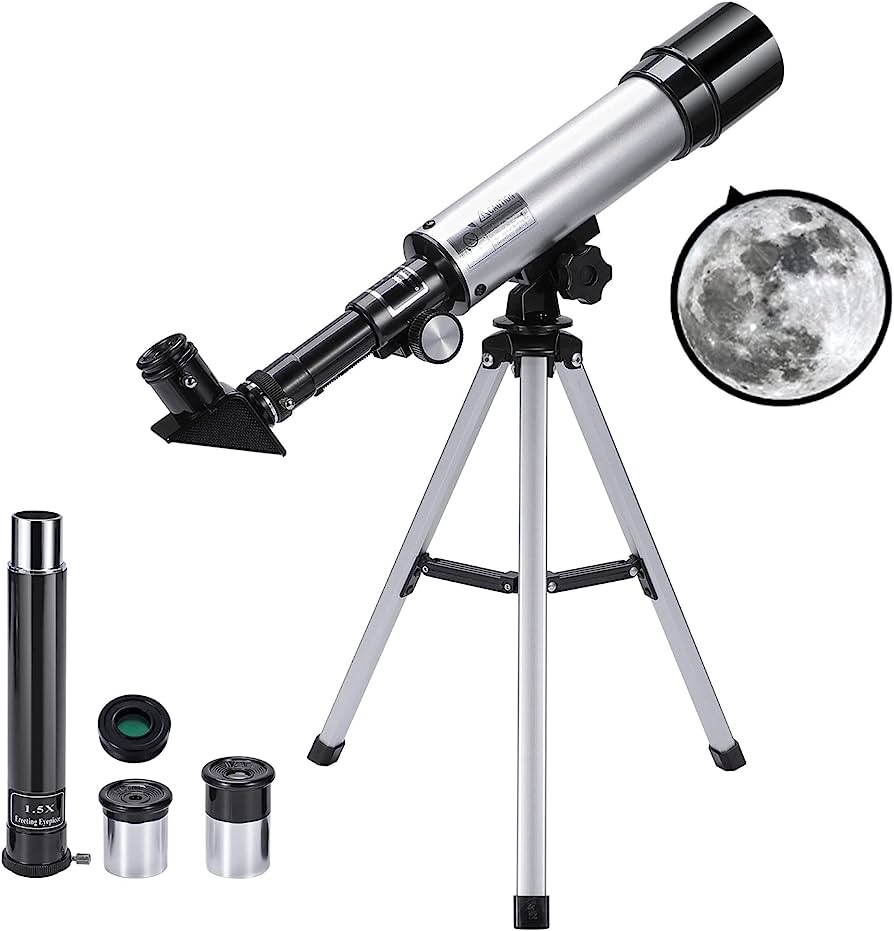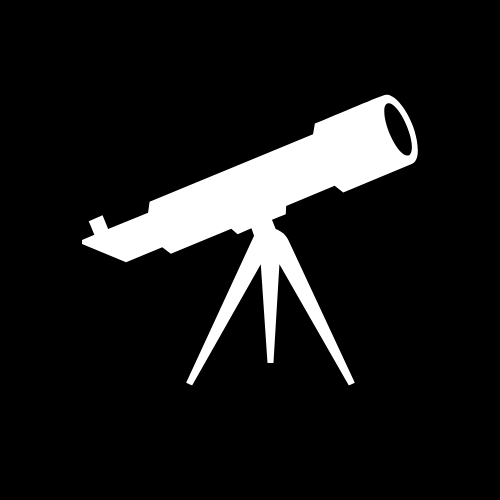Are Telescopes Worth It?
Gazing up at the night sky, one can’t help but marvel at the vast expanse of the universe and the celestial wonders it holds. From ancient civilizations to modern-day enthusiasts, the allure of the stars, planets, and galaxies has been a constant source of fascination. Enter the telescope: a tool that promises to bring these distant wonders closer to our eyes, offering a more intimate view of the cosmos. But with a myriad of options available and varying opinions on their utility, a common question arises: Are telescopes truly worth the investment? In this article, we delve into the value of telescopes, exploring their benefits, limitations, and the unique experiences they offer, aiming to shed light on this age-old curiosity. Whether you’re an aspiring astronomer or simply someone intrigued by the night sky, join us as we embark on a journey to understand the true worth of this remarkable instrument.

Benefits of Owning a Telescope:
Exploration of the Universe from Home
Owning a telescope is akin to having a personal gateway to the cosmos. With it, the vastness of space becomes accessible from the comfort of your backyard or balcony. Distant planets, shimmering star clusters, and nebulous galaxies that once seemed unreachable suddenly come into view, offering a firsthand experience of the universe’s grandeur.
Educational Value for Kids and Adults
A telescope is not just an instrument; it’s a powerful educational tool. For children, it can ignite a passion for science, fostering curiosity and critical thinking. They learn about celestial bodies, space phenomena, and the principles of optics. For adults, it offers a chance to rekindle their sense of wonder, delve deeper into the intricacies of astronomy, and even pick up new knowledge about the ever-evolving universe.
Enhancing Appreciation for Astronomy and Science
There’s something profoundly humbling about observing a planet like Jupiter or witnessing the radiant bands of the Milky Way. These experiences, made possible by a telescope, deepen our appreciation for the vastness and complexity of the universe. They remind us of our place in the cosmos and instill a greater respect for the scientific endeavors that seek to unravel its mysteries.
Potential for Astrophotography
In the digital age, telescopes offer more than just visual experiences. With the right equipment and some practice, they become tools for astrophotography, allowing enthusiasts to capture stunning images of celestial events, planets, and deep-sky objects. These photographs serve as personal mementos of cosmic explorations and can be shared with others, further spreading the allure of the night sky.
In essence, a telescope is more than a mere purchase; it’s an investment in experiences, knowledge, and a deeper connection with the universe. Whether you’re gazing at the craters of the moon or capturing the ethereal beauty of a nebula, the benefits of owning a telescope are manifold and truly enriching.
Common Concerns:
Light Pollution in Urban Areas
One of the most prevalent challenges faced by budding astronomers is the pervasive glow of city lights. Urban areas, with their dense concentration of streetlights, billboards, and buildings, often cast a bright haze that obscures the subtler details of the night sky. This light pollution can significantly diminish the visibility of fainter stars, galaxies, and other celestial wonders, leading many to question the utility of a telescope in such environments. However, while light pollution is a hurdle, it doesn’t render telescopes useless. Many celestial objects, like the moon, planets, and certain star clusters, remain visible even in light-polluted skies.
Misconceptions about Telescope Views vs. Images in Media
The vibrant, detailed images of space captured by professional telescopes and satellites, often seen in media, can set unrealistic expectations for amateur astronomers. A personal telescope, especially an entry-level one, may not provide the same level of detail or color as those images. It’s essential to understand that many of these pictures are taken with advanced equipment, often enhanced or combined with data from different spectrums to produce the final image. While personal telescopes offer genuine and direct views of the cosmos, they may differ from the processed images we’re accustomed to seeing.
The Learning Curve and Potential Initial Disappointment
Astronomy, like any other hobby or discipline, comes with its learning curve. Setting up a telescope, aligning it, and navigating the night sky can be challenging for beginners. Moreover, initial observations might not always meet expectations. Factors like atmospheric conditions, telescope quality, and even the observer’s experience play a role in the clarity and detail of the view. It’s not uncommon for newcomers to feel a tinge of disappointment or frustration during their initial stargazing sessions. However, with patience, practice, and a deeper understanding of the instrument and the sky, the rewards of astronomy become increasingly evident.
Addressing these concerns is crucial for anyone considering delving into the world of astronomy. While there are challenges, they are not insurmountable. With the right knowledge, expectations, and perseverance, the wonders of the universe remain within reach, waiting to be explored and appreciated.
Factors to Consider:
Personal Interest in Astronomy
Before investing in a telescope, it’s essential to gauge your genuine interest in astronomy. A telescope, while a powerful tool, requires time, patience, and dedication to yield its full benefits. Ask yourself if you’re intrigued by the mysteries of the cosmos, willing to spend nights exploring the sky, and eager to learn more about celestial bodies and phenomena. A strong passion for astronomy will ensure that your telescope doesn’t gather dust and remains a source of endless exploration and wonder.
Budget for the Telescope
Telescopes come in a wide range of prices, from affordable beginner models to high-end professional setups. Determine how much you’re willing to invest in this hobby. While it might be tempting to go for the cheapest option, remember that quality matters. A well-made telescope can provide clearer views and last longer. It’s often recommended to get the best telescope you can afford, ensuring a balance between cost and quality.
| Cost Range | Telescope Type | Typical Usage |
|---|---|---|
| Low | Small Refractors, Basic Reflectors | Beginner, casual stargazing, moon & planets |
| Medium | Medium Refractors, Dobsonians | Amateur astronomy, deep-sky observation |
| High | Large Reflectors, Advanced Catadioptrics | Serious hobbyists, astrophotography, detailed planetary and deep-sky observation |
Living Location (Urban vs. Rural)
Your geographical location plays a significant role in your stargazing experience. Urban areas, with their light pollution, can limit the visibility of certain celestial objects. On the other hand, rural or less populated areas offer darker skies, making them ideal for astronomy. Consider your current location and how often you might be able to travel to darker sites. If you’re in a city, you might want to invest in a telescope that’s more suited for planetary viewing or consider light pollution filters.
Storage and Maintenance Considerations
Telescopes, while sturdy, are precision instruments that require proper care. Think about where you’ll store your telescope when it’s not in use. It should be a dry, dust-free environment, away from direct sunlight and temperature extremes. Additionally, consider the maintenance aspect. Are you prepared to occasionally clean the optics, ensure the telescope remains aligned, and protect it from potential damage? Proper storage and maintenance not only prolong the telescope’s lifespan but also ensure optimal performance during observations.
In conclusion, buying a telescope is an exciting venture, but it’s one that requires thoughtful consideration. By assessing these factors, you can make an informed decision, ensuring that your investment brings countless nights of celestial wonder and discovery.
Alternatives to Telescopes:

Benefits of Binoculars for Stargazing
For those not ready to invest in a telescope or looking for a more portable option, binoculars present a fantastic alternative. Binoculars are lightweight, easy to use, and can enhance the stargazing experience significantly. With a good pair, one can observe the moon’s craters, Jupiter’s major moons, and even some star clusters. They’re especially useful for wide-field views, allowing observers to take in larger portions of the night sky. Additionally, binoculars are versatile and can be used for other activities like birdwatching or sightseeing, making them a multifunctional investment.
Mobile Apps and Software for Astronomy Enthusiasts
In the digital age, technology offers various tools to aid and enhance our understanding of the cosmos. Numerous mobile apps and software are available that provide real-time star maps, identify celestial objects, and even simulate the night sky from any location on Earth. Some popular apps like Stellarium, SkyView, and Star Walk offer interactive features, allowing users to point their devices at the sky and identify stars, planets, and constellations. These digital tools are excellent for beginners to familiarize themselves with the night sky and for seasoned astronomers to plan their observation sessions.
Visiting Local Observatories or Planetariums
If you’re unsure about investing in personal equipment but still wish to experience the wonders of the universe, local observatories and planetariums are excellent places to start. Observatories often house powerful telescopes, offering public viewing sessions where one can observe distant galaxies, nebulae, and other deep-sky objects. Planetariums, on the other hand, offer immersive dome projections of the night sky, often accompanied by educational shows about astronomy, space exploration, and the universe’s mysteries. These institutions provide a hands-on experience, fostering a deeper appreciation for astronomy and often igniting a passion for the subject.
In essence, while telescopes are incredible tools for exploring the universe, they aren’t the only gateway to the stars. Whether you’re using binoculars, digital apps, or visiting educational institutions, the night sky’s wonders are accessible in various ways, each offering its unique perspective and experience.
Real Experiences:
Positive Experiences:
- Sarah, Amateur Astronomer: “The first time I saw Saturn’s rings through my telescope, it felt surreal. It wasn’t just an image in a book or on a screen; it was right there, in real-time. That moment solidified my love for astronomy, and I’ve spent countless nights since then exploring the cosmos.”
- Raj, Astrophotography Enthusiast: “Investing in a telescope opened up a whole new world of photography for me. Capturing the moon’s craters, the bands on Jupiter, and even distant galaxies has been an incredibly rewarding experience. It’s a blend of art and science that I never knew I needed in my life.”
Negative Experiences:
- Alex, City Dweller: “I bought a telescope with high expectations, but living in the city center, the light pollution made it hard to see much. I wish I’d known more about the limitations before investing.”
- Liam, Occasional Observer: “While the telescope seemed like a good idea at the time, it ended up collecting dust in my attic. The setup and learning curve were more than I anticipated, and I just didn’t find the time to use it regularly.”
Telescope Tourists
An emerging trend in the world of astronomy is the idea of “telescope tourists.” These are individuals who, instead of buying a telescope, travel to observatories or astronomy-themed events to get a taste of stargazing without the commitment of ownership. While this can be a great way to experience the wonders of the universe, it underscores the importance of genuine interest. Owning a telescope is a commitment, both in terms of time and learning. It’s not just about the occasional glance at the stars but a deeper dive into the intricacies of the cosmos. As many telescope owners will attest, the most rewarding experiences come from consistent observation, exploration, and a genuine passion for the universe’s mysteries.
In conclusion, while telescopes offer unparalleled views of the night sky, they’re not for everyone. It’s essential to weigh the pros and cons, understand the commitment involved, and most importantly, assess one’s genuine interest in astronomy before diving into the world of telescopes.
Conclusion
The allure of the cosmos, with its vast expanse and celestial wonders, has captivated humanity for millennia. In our quest to get closer to the stars, telescopes have emerged as powerful tools, bridging the gap between our earthly existence and the mysteries of the universe. But like any tool, its value is derived not just from its capabilities but from how it’s used.
Weighing the pros and cons of owning a telescope is crucial. On one hand, telescopes offer unparalleled views of celestial bodies, serve as educational tools, and even open doors to the mesmerizing world of astrophotography. On the other, they require a commitment of time, effort, and often, a significant financial investment. Light pollution, the learning curve associated with using the instrument, and storage considerations are just a few challenges that potential buyers might face.
For those considering this journey, it’s essential to introspect and assess genuine interest and commitment. A telescope isn’t just a purchase; it’s an investment in experiences, knowledge, and a deeper connection with the universe. Casual curiosity might lead to occasional stargazing sessions, but a deep-seated passion for astronomy can transform the telescope into a window to endless exploration and discovery.
In the long run, the value of a telescope transcends its price tag. It’s about the moments of wonder it brings, the knowledge it imparts, and the connection it fosters with the universe. For those willing to embark on this journey with genuine interest and dedication, the telescope promises a world of celestial wonders, making the investment truly worth its weight in stars.
FAQ Section:
Q1: What can I realistically expect to see with a beginner’s telescope?
A1: With a beginner’s telescope, you can expect to see the moon’s craters, Jupiter’s major moons, Saturn’s rings, and some of the brighter star clusters and nebulae. However, the clarity and detail will depend on the telescope’s quality and the viewing conditions.
Q2: How much should I spend on my first telescope?
A2: It’s advisable to start with a budget of $100 to $300 for a beginner’s telescope. This range usually offers a balance between quality and affordability. However, it’s essential to prioritize quality optics over features.
Q3: Is light pollution a deal-breaker for owning a telescope?
A3: While light pollution can limit the visibility of fainter stars and deep-sky objects, there’s still plenty to observe, like the moon, planets, and some star clusters. Additionally, there are filters available that can help mitigate the effects of light pollution.
Q4: Can I use my telescope for astrophotography?
A4: Yes, many telescopes can be adapted for astrophotography, but it requires additional equipment like a camera adapter, a suitable camera, and potentially a tracking mount. It’s worth noting that astrophotography has a steeper learning curve than visual observation.
Q5: How do I maintain and clean my telescope?
A5: Regular maintenance includes keeping the telescope covered when not in use, avoiding touching the optics, and storing it in a dry, dust-free environment. Cleaning should be done sparingly, using appropriate cleaning solutions and microfiber cloths for the optics.
Q6: Are telescopes a good educational tool for children?
A6: Absolutely! Telescopes can spark interest in astronomy and science in children. They offer hands-on learning and can be a great way to spend quality educational time outdoors.
Q7: Can I store my telescope outdoors?
A7: While some observatories are designed for outdoor storage, most consumer telescopes should be stored indoors to protect them from moisture, temperature fluctuations, and potential damage.
Q8: Is a bigger telescope always better?
A8: Not necessarily. While a larger telescope can gather more light and provide brighter and more detailed views, it’s also heavier, less portable, and can be more challenging to set up and use. It’s essential to balance size with usability and your specific needs.
